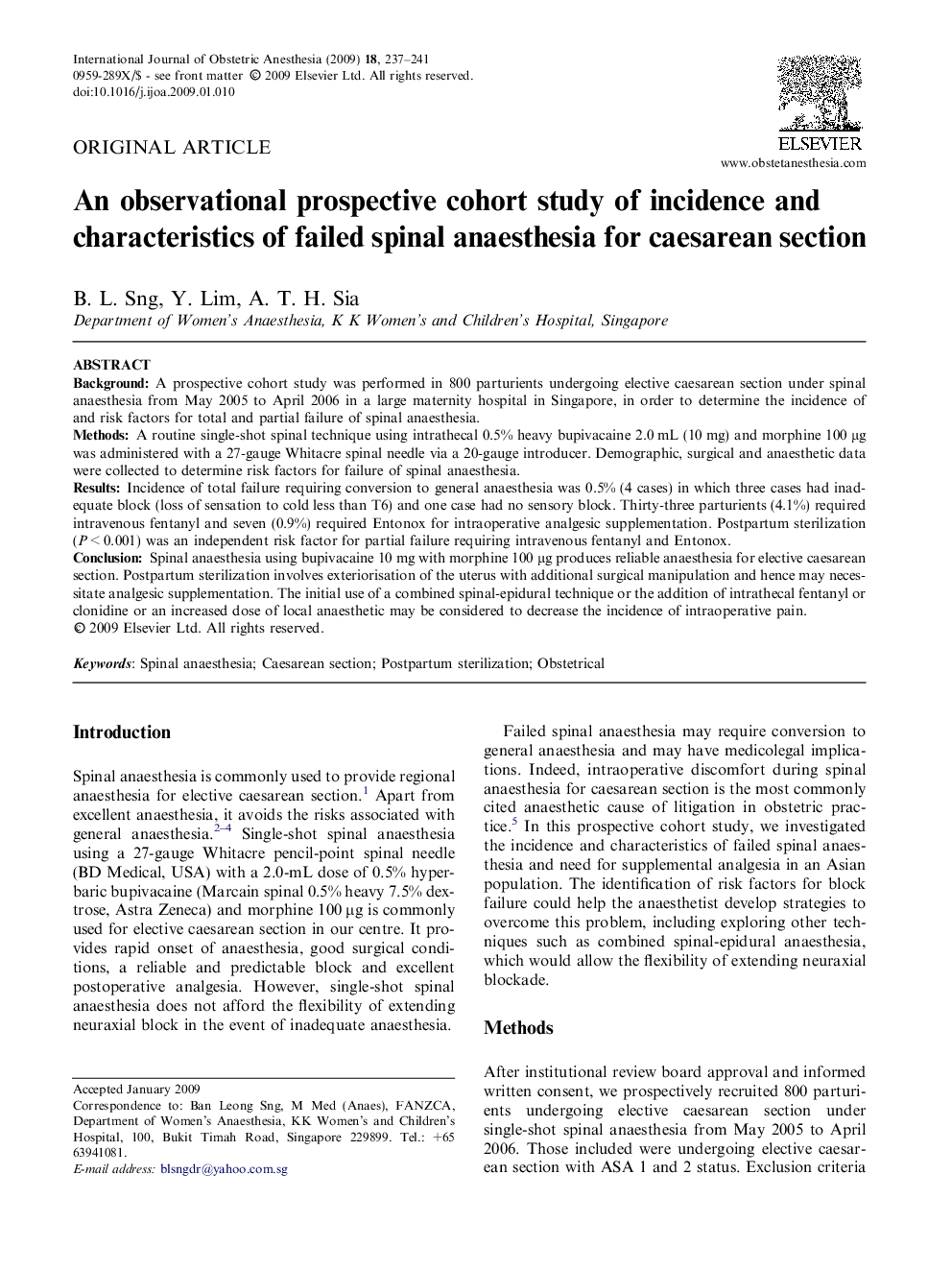| Article ID | Journal | Published Year | Pages | File Type |
|---|---|---|---|---|
| 2758431 | International Journal of Obstetric Anesthesia | 2009 | 5 Pages |
BackgroundA prospective cohort study was performed in 800 parturients undergoing elective caesarean section under spinal anaesthesia from May 2005 to April 2006 in a large maternity hospital in Singapore, in order to determine the incidence of and risk factors for total and partial failure of spinal anaesthesia.MethodsA routine single-shot spinal technique using intrathecal 0.5% heavy bupivacaine 2.0 mL (10 mg) and morphine 100 μg was administered with a 27-gauge Whitacre spinal needle via a 20-gauge introducer. Demographic, surgical and anaesthetic data were collected to determine risk factors for failure of spinal anaesthesia.ResultsIncidence of total failure requiring conversion to general anaesthesia was 0.5% (4 cases) in which three cases had inadequate block (loss of sensation to cold less than T6) and one case had no sensory block. Thirty-three parturients (4.1%) required intravenous fentanyl and seven (0.9%) required Entonox for intraoperative analgesic supplementation. Postpartum sterilization (P < 0.001) was an independent risk factor for partial failure requiring intravenous fentanyl and Entonox.ConclusionSpinal anaesthesia using bupivacaine 10 mg with morphine 100 μg produces reliable anaesthesia for elective caesarean section. Postpartum sterilization involves exteriorisation of the uterus with additional surgical manipulation and hence may necessitate analgesic supplementation. The initial use of a combined spinal-epidural technique or the addition of intrathecal fentanyl or clonidine or an increased dose of local anaesthetic may be considered to decrease the incidence of intraoperative pain.
